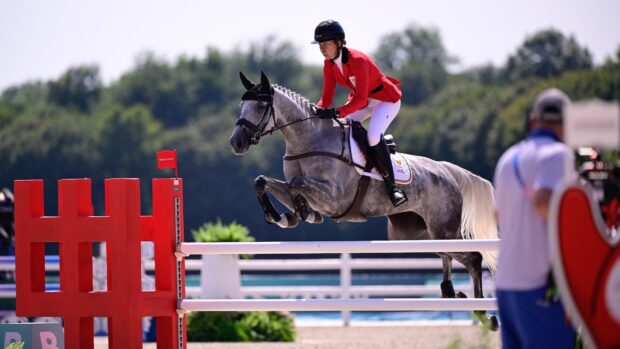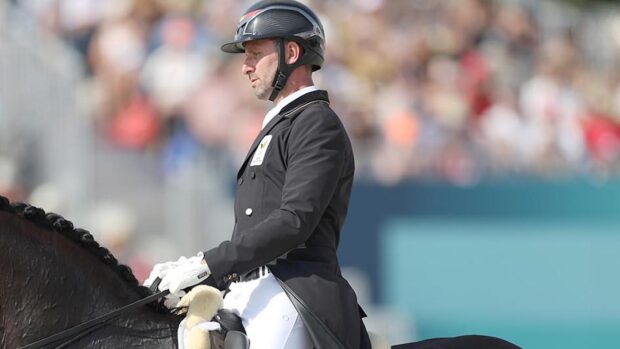What is it?
Dope testing takes place in all competitive horse sport, and can happen at any time, at any event in any discipline.
It’s a serious matter, and FEI protocol must be followed. “Doping is fundamentally contrary to the spirit of sport,” says the FEI, which creates the rules for Clean Sport in equestrianism.
The Commission on Anti-Doping & Medication was founded in November 2008, after the high-profile doping cases from the 2008 Olympic Games. A number of riders appealed to the FEI for clearer guidance on doping and medication.
Any riders competing under FEI rules must stick to the global authority’s clean sport regulations, at all levels of the sport. Riders competing in British Eventing, British Showjumping, British Dressage and British Riding Clubs also must adhere to FEI protocol when it comes to random testing.
“The FEI’s testing process is clear and thorough,” an FEI spokesman tells H&H. “Protecting the integrity of our sport, ensuring it is clean and fair, is vital and even more important when there is an animal involved.
“With over 4,600 international events on the FEI calendar, it is our responsibility as the international governing body to protect our athletes and our sport.”
How does it work?
Equine anti-doping and controlled medication can take place randomly, not just if you’ve won.
Testing is always carried out in the same way, and horses may be tested multiple times at the same event.
When dope testing, horses are taken to a sampling box, where a sample of blood and urine is taken. A steward or testing official will be present to watch. Riders are advised to go themselves to the sampling box, although they can nominate a representative, however only the person that witnesses the sampling can testify about the procedure and whether it was conducted according to the rules.
The testing vet fills in a form and keeps one part. A second part is given to the person responsible and the third is sent with the sample to the FEI-approved lab.
There are five official laboratories, with the central lab in Cambridgeshire. Others are in Australia, America, Hong Kong and France.
Samples are marked with a unique number, and not the name or horse or rider. The sample is then couriered to the lab. Labs can pick up even the smallest trace.
The B samples are stored for any future testing, and A samples are analysed, which can take up to two or three weeks. If a prohibited substance is found, it is reported to the FEI.
If it tests negative, the sample is destroyed [unless from a world championships or Olympic event]. If it’s positive the rider is informed, who then can ask for a B sample. There will be a provisional suspension, a hearing and verdict, which can result in a lengthy ban.
If it’s positive and the person responsible is found guilty, they can appeal to the Council for Arbitration in Sport.
What are they looking for?
The FEI publishes an equine prohibited substances list, which is updated regularly. Riders are encouraged to check this frequently to ensure they’re not treating or feeding their horses any substances that are on this list.
Banned substances are those that are deemed by the FEI to have “no legitimate use in the competition horse and/or have a high potential for abuse”. They are not permitted for use at any time.
Controlled medication are substances that are deemed by the FEI to have “therapeutic value and/or be commonly used in equine medicine”, however they have the potential to affect performance and/or be a welfare risk.
Any substance that affects the performance of the horse in a calming or energising manner that contains prohibited substances are banned.
“We have a rigorous testing policy in place, with over 1,000 substances on the FEI prohibited substances list,” says an FEI spokesman.
“Boosting awareness and education is key for us as our sport grows around the world, and the FEI is investing in all forms of FEI clean sport communication to ensure athletes and veterinarians are aware.”
Continued below…
Like this? You might also enjoy reading these:
Protecting people, horses and the sport: why clean sport week applies to you
How can you avoid an accidental positive test?
- Although there’s high security at events, the competitor is still the person responsible.
- Athletes should read up on FEI rules, to ensure there are no grey areas when it comes to substances. The FEI has a clear Clean Sport online hub with all relevant information. You can also download the Clean Sport app and there are versions for both Apple and android.
- Always speak to your vet if your horse needs treatment. They can advise you on detection times (ie how long it takes for a medicine to clear from a horse’s system). These can also be found on the FEI Clean Sport website.
- Tell your vet if you intend to compete, when and where.
- Keep in mind possible contamination of feed by Naturally Occurring Prohibited Substances (NOPS). Buy your feed from reputable companies and preferably those that have signed up to the BETA UFAS NOPS Code.
- Note down the batch number. In some cases you may need to call the manufacturer for a full break down of ingredients. If in doubt, check.
- General day-to-day items, such as caffeine – which is found in chocolate, tea and coffee – can be detected. It’s therefore important that nothing is left lying around, you wash your hands before preparing feed and there’s no way your horse can ingest anything that’s meant for you.
- There have been cases where horses have failed dope tests due to human urine and even hairspray.
- Contaminated hay can also be an issue.
- Beware of cross-contamination between horses. If one horse in the yard is on medication, ensure that does not pass to another. Stick to the same buckets each time for each horse. The same goes for water buckets.
- Wash your hands thoroughly and use disposable gloves if preparing feed with medication. Good hygiene is essential.
- Don’t use home-made remedies and be cautious with supplements.
- A “medication logbook” must be kept for each horse recording the date, substance and dosage of all treatments administered to the horse which involve a prohibited substance and details of the person who administered them. This logbook can be inspected by the FEI Tribunal, so make sure it’s kept up to date.
For all the latest news analysis, competition reports, interviews, features and much more, don’t miss Horse & Hound magazine, on sale every Thursday





